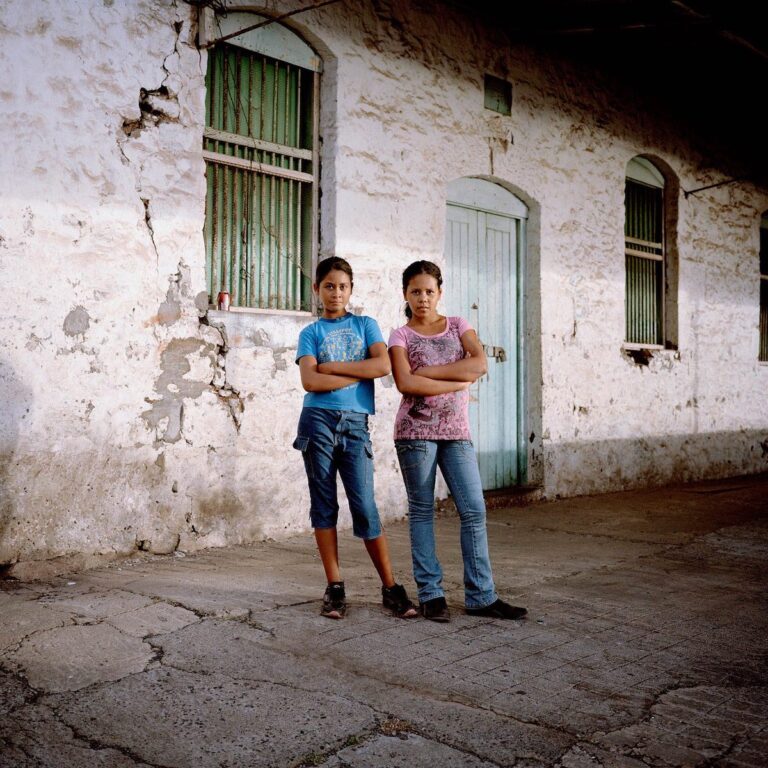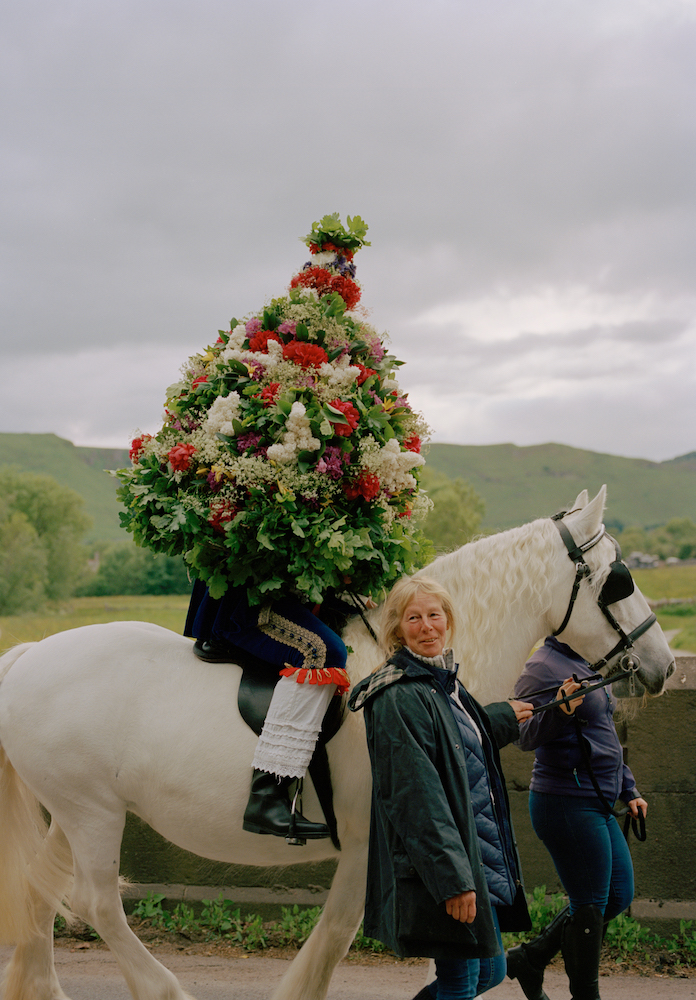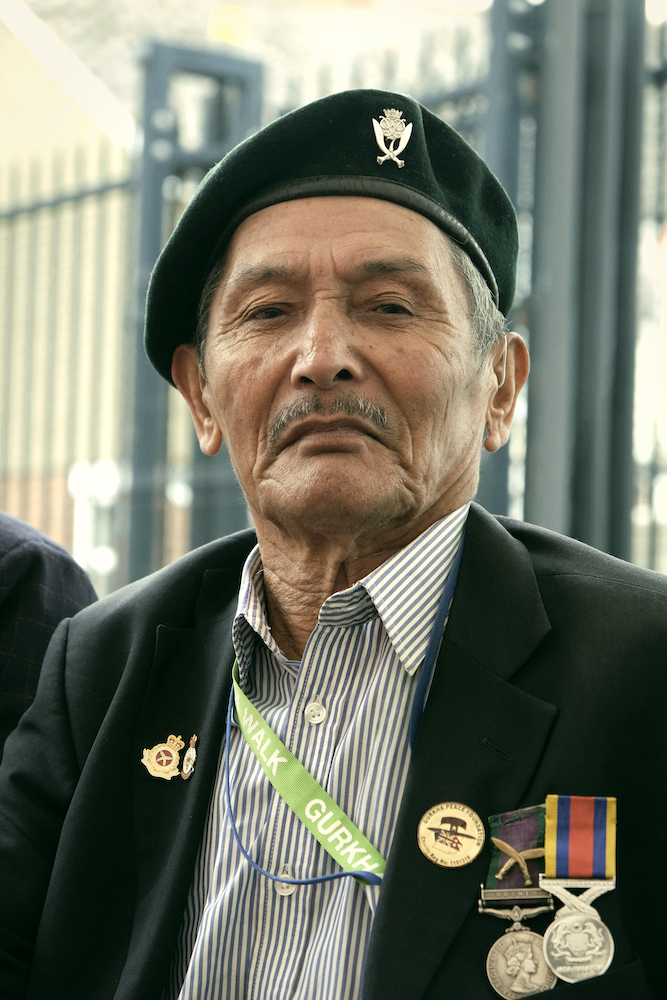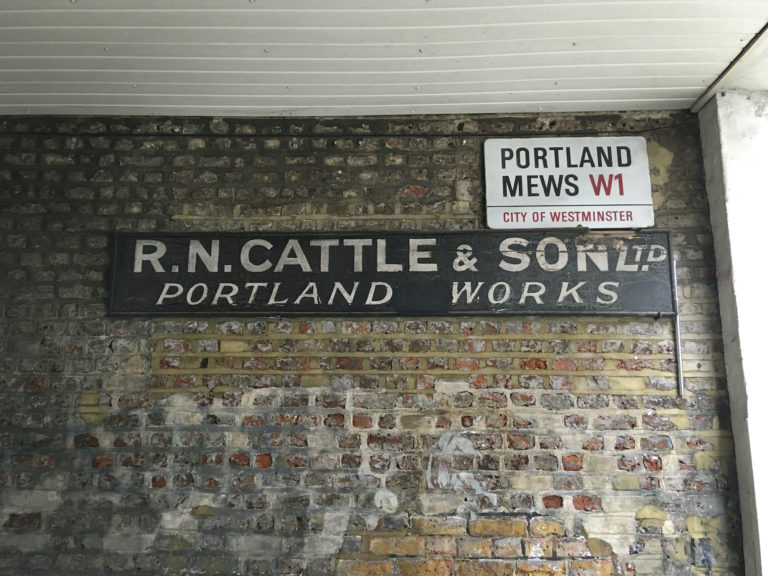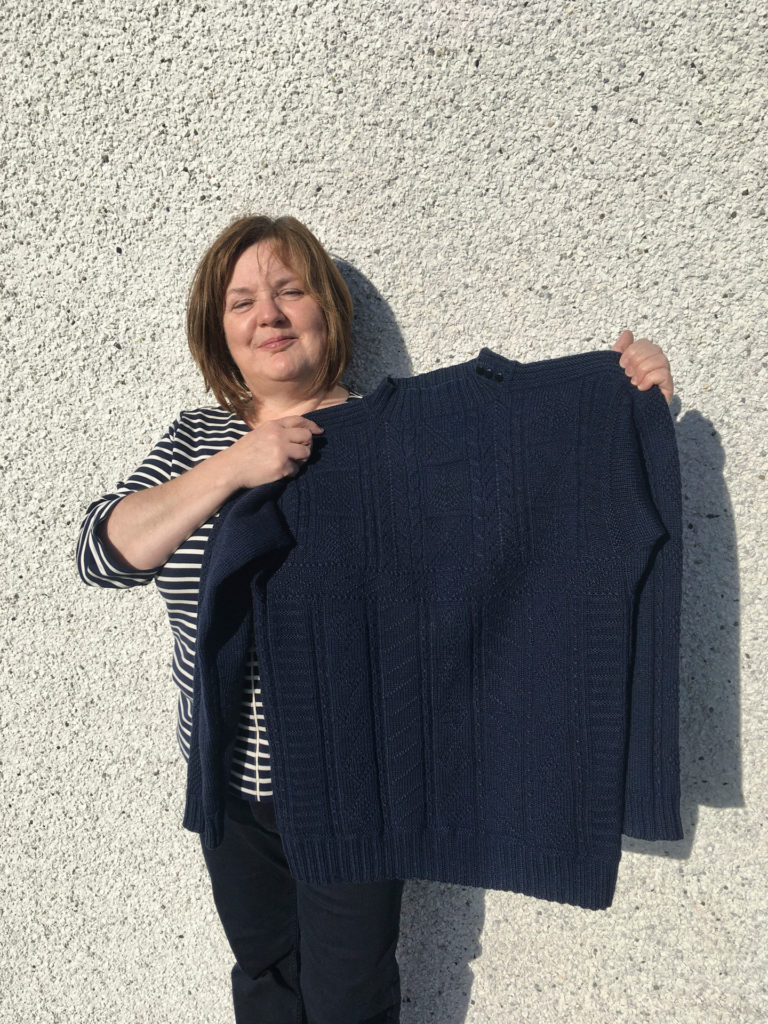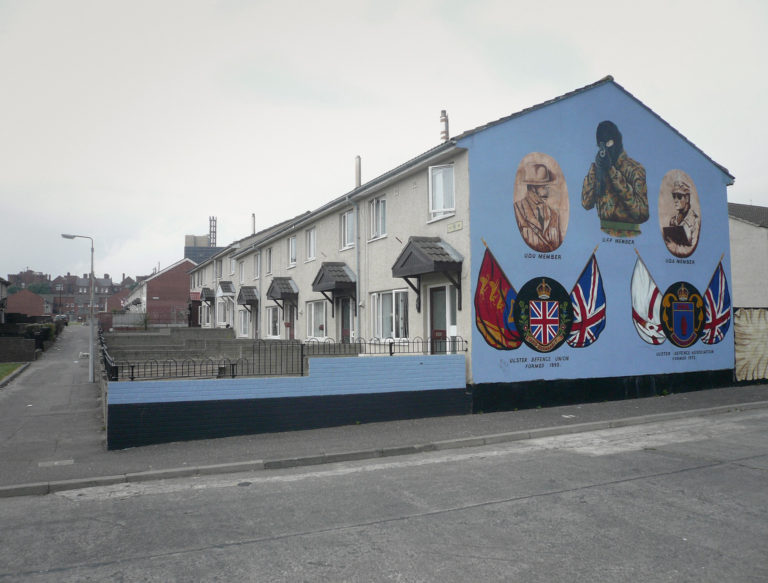THE WELSH VALLEYS I Robert Haines. Hoelgerrig, Merthyr Tydfyil, Glamorgan, Wales
Robert Haines life affirming images of his hometown in the 1970s
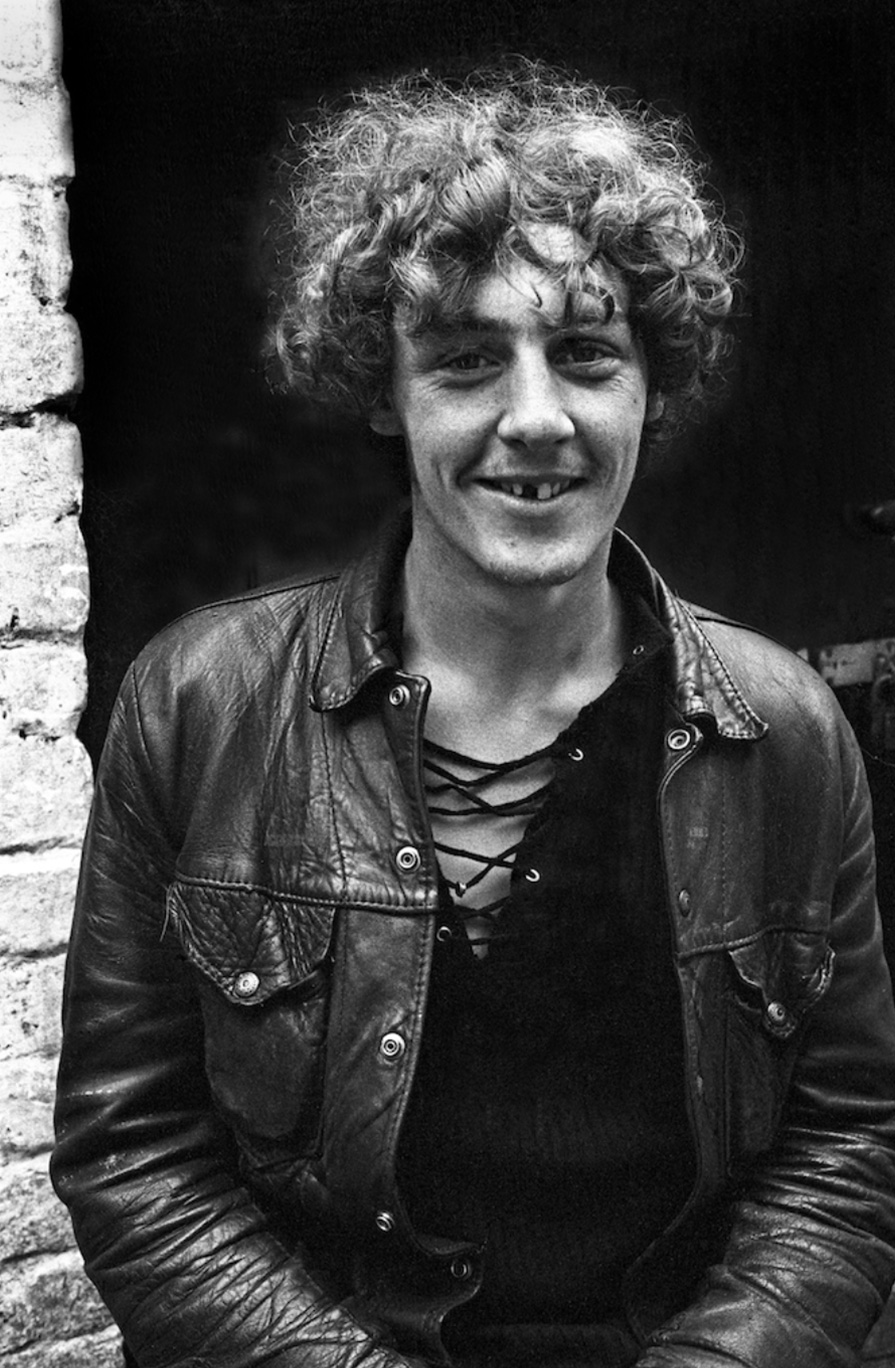
Mad Malcom
No chemical substance was too hot for Malcolm. He had just taken some speed with his cider before I photographed him. He died after hitting a wall at high speed on his motorbike while fleeing the police. A lovely friendly type.
Like many great photographic projects these images are firmly rooted in a location and a very distinctive location at that. The coal mining valleys of South Wales were once covered with sheep and heather. As the industrial revolution swept over the area, the ground was turned inside out in search of coal and iron. Once the search stopped the valleys seemed to wane. This wonderful project by the photographer Robert Haines is also part of a history of re-discovered photography alongside the likes of Charles Jones’ vegetables or Vivian Maier’s New York streets. The difference here being that Robert re-discovered his own images 40 years after taking them as a 19 year old art student back home for the holidays. The resulting book; Once Upon a Time In Wales, is a classic. There’s a compassion and intimacy to these works that maybe could only come from being part of the community you are documenting, in this case a predominantly Welsh speaking mining town that his family had lived in for three generations.
I know of nowhere else in the UK where the sharp effect of industrialisation on a landscape is so hard cut on such a large scale. The title of Richard Llewellyn’s famous novel speaks volumes: How Green Was My Valley. There’s much history and singularity in these once green valleys. As these images show, there’s also a vibrancy and energy to the people. Do you still get these characters now? As Robert said in a Guardian feature at the time of the images re-release: ‘these photographs speak to us today of a world very different from our own’. The wonderful text adds to that voice. It is succinct, honest and bittersweet.
More wealth trickles into the hillsides these days, mainly up the slopes though with Cardiff commuters, their new four bedroomed houses challenging the endlessly repeating ribbons of 19th century mineworkers cottages. Maybe this is also a challenge to the close knit egalitarian community the valleys once held. As Robert has said ‘the colliers believed strongly in education which resulted in a mass exodus of sons and daughters in search of a better life’, presumably even more so after the break up of the coalfields. There is continual flux for better or worse, for richer or poorer. The distinctiveness remains though.
Once Upon a Time in Wales is currently out of print but do get hold of a second hand copy if you can.
Richard Llewellyn’s seminal novel can be bought here.
Like many great photographic projects these images are firmly rooted in a location and a very distinctive location at that. The coal mining valleys of South Wales were once covered with sheep and heather. As the industrial revolution swept over the area, the ground was turned inside out in search of coal and iron. Once the search stopped the valleys seemed to wane. This wonderful project by the photographer Robert Haines is also part of a history of re-discovered photography alongside the likes of Charles Jones’ vegetables or Vivian Maier’s New York streets. The difference here being that Robert re-discovered his own images 40 years after taking them as a 19 year old art student back home for the holidays. The resulting book; Once Upon a Time In Wales, is a classic. There’s a compassion and intimacy to these works that maybe could only come from being part of the community you are documenting, in this case a predominantly Welsh speaking mining town that his family had lived in for three generations.
I know of nowhere else in the UK where the sharp effect of industrialisation on a landscape is so hard cut on such a large scale. The title of Richard Llewellyn’s famous novel speaks volumes: How Green Was My Valley. There’s much history and singularity in these once green valleys. As these images show, there’s also a vibrancy and energy to the people. Do you still get these characters now? As Robert said in a Guardian feature at the time of the images re-release: ‘these photographs speak to us today of a world very different from our own’. The wonderful text adds to that voice. It is succinct, honest and bittersweet.
More wealth trickles into the hillsides these days, mainly up the slopes though with Cardiff commuters, their new four bedroomed houses challenging the endlessly repeating ribbons of 19th century mineworkers cottages. Maybe this is also a challenge to the close knit egalitarian community the valleys once held. As Robert has said ‘the colliers believed strongly in education which resulted in a mass exodus of sons and daughters in search of a better life’, presumably even more so after the break up of the coalfields. There is continual flux for better or worse, for richer or poorer. The distinctiveness remains though.
Once Upon a Time in Wales is currently out of print but do get hold of a second hand copy or even an original print here.
Richard Llewellyn’s seminal novel can be bought here.
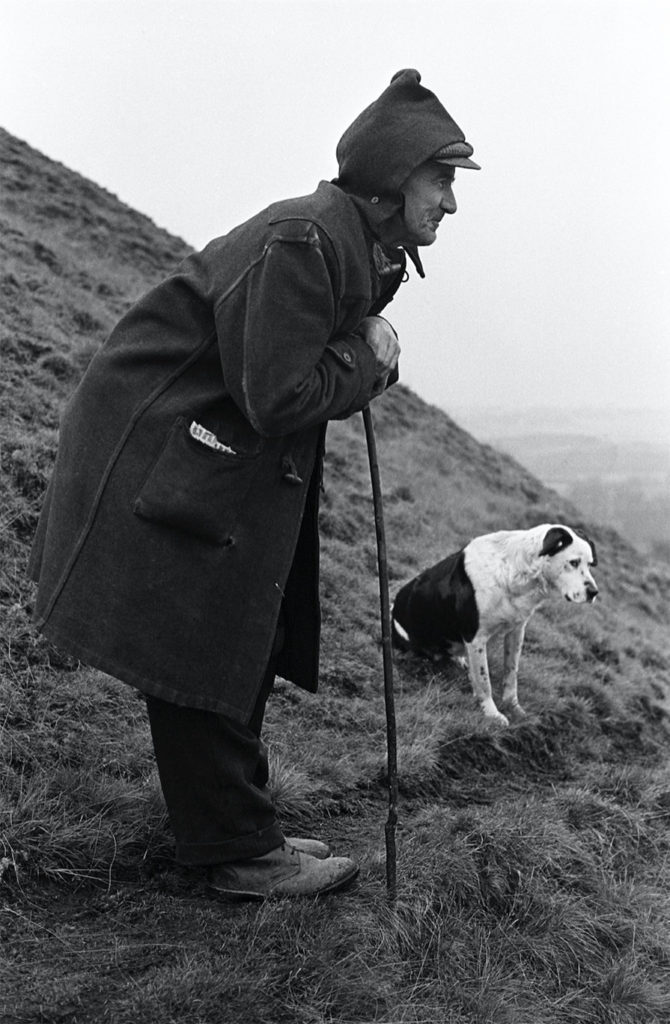
Dai Passmore and his dog
Dai could often be found wandering the slag tips above Heolgerrig. He had a complex of sheds at the bottom of the tips where he kept ferrets and pigs. He used to be seen driving a horse and cart around town. He liked stout. This photograph was taken on Jan 4th 1972. It started to snow just as I took the photograph. It was a very light snow. I came across Tudor as he paused for breath while walking on the steep tip. I remember it so well because it was at this precise moment that my Nan passed away.
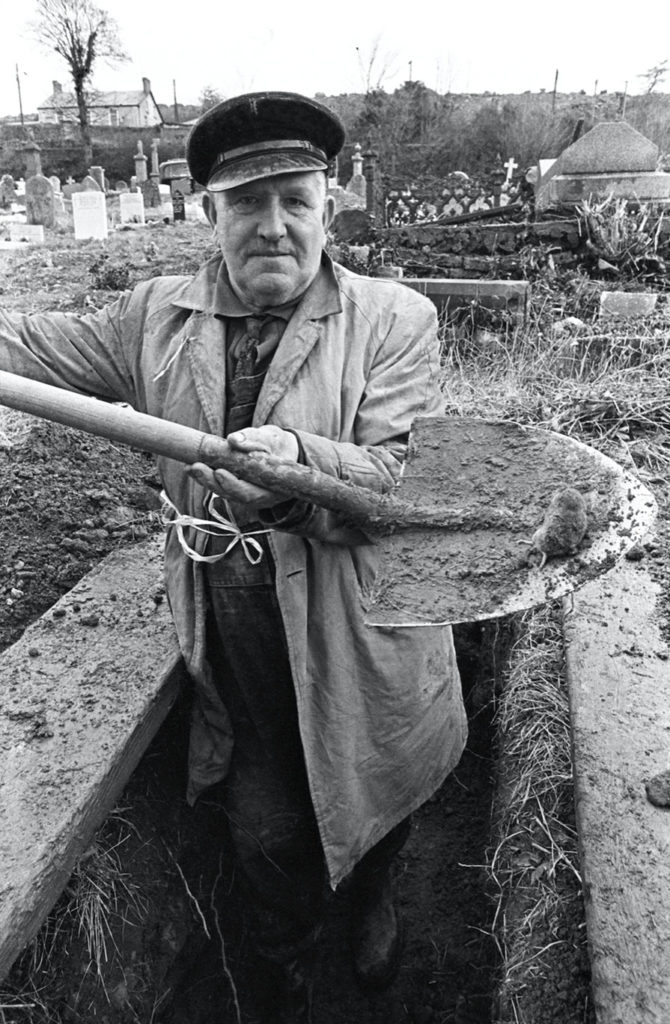
Tommy Gravedigger
Tommy Gravedigger removing a dead mouse from a grave – mice often fall into open graves at night and are invariably found dead in the morning. Tommy had buried over 7000 at Cefn Cemetery. He was the caretaker of the dead from Heolgerrig. He knew where every family was buried. His wife had died 20 years earlier after choking on an apple. He gave her a lovely spot, he said, sheltered by the trees. Occasionally when he walked around the cemetery his attention would inexplicably be drawn to a gravestone. It was a sign that there was going to be a death in the family, he claimed.
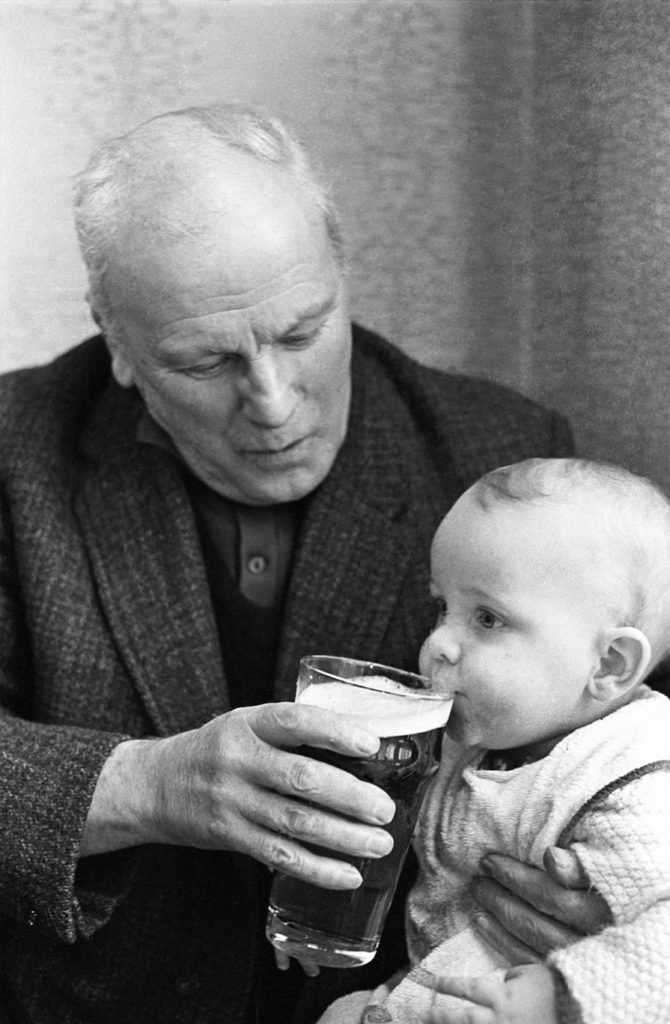
First Pint
Underage drinking – Dai Edwards lived at the top of Heolgerrig with Maggie Soap, so named for her habit of rubbing soap into her hair to give it body. Dai once hid all his money beneath the floorboards of the caravan. Months later he discovered that it all disappeared. It had been eaten by mice. Dai is giving Justin James a taste of beer in the Heolgerrig Social Club.
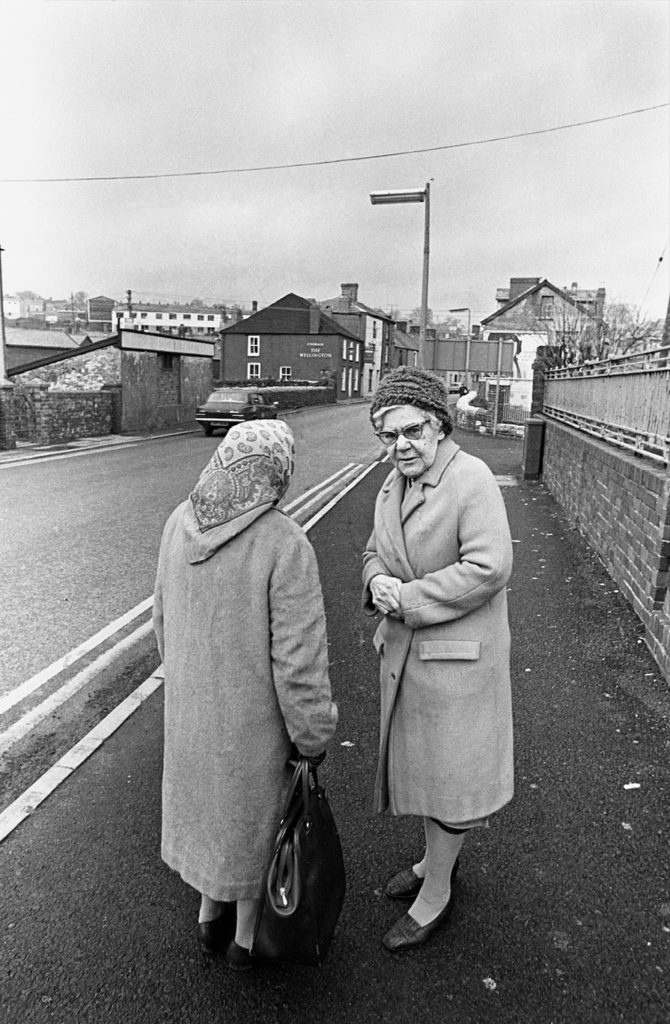
Two Women in Georgetown
Two women gossiping in Bethesda Street near Jackson’s Bridge, Georgetown.
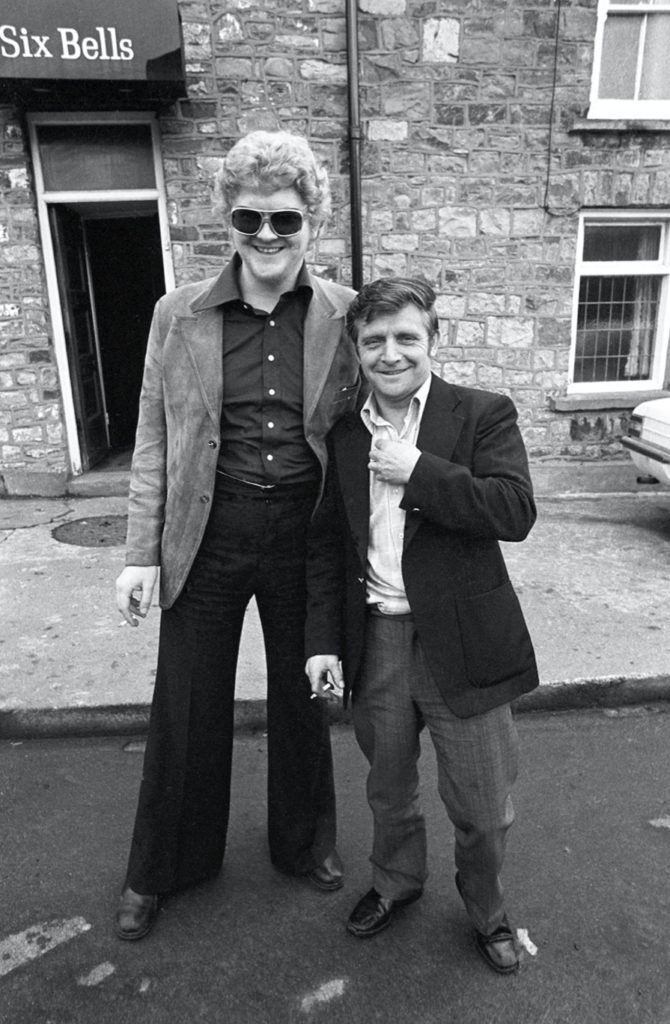
Arwel and Mel
Arwel Reed and Mel Jones emerge after a good afternoon session in the six bells. Arwell was a young police officer. He used to go fishing with Mel who was a very keen fisherman.
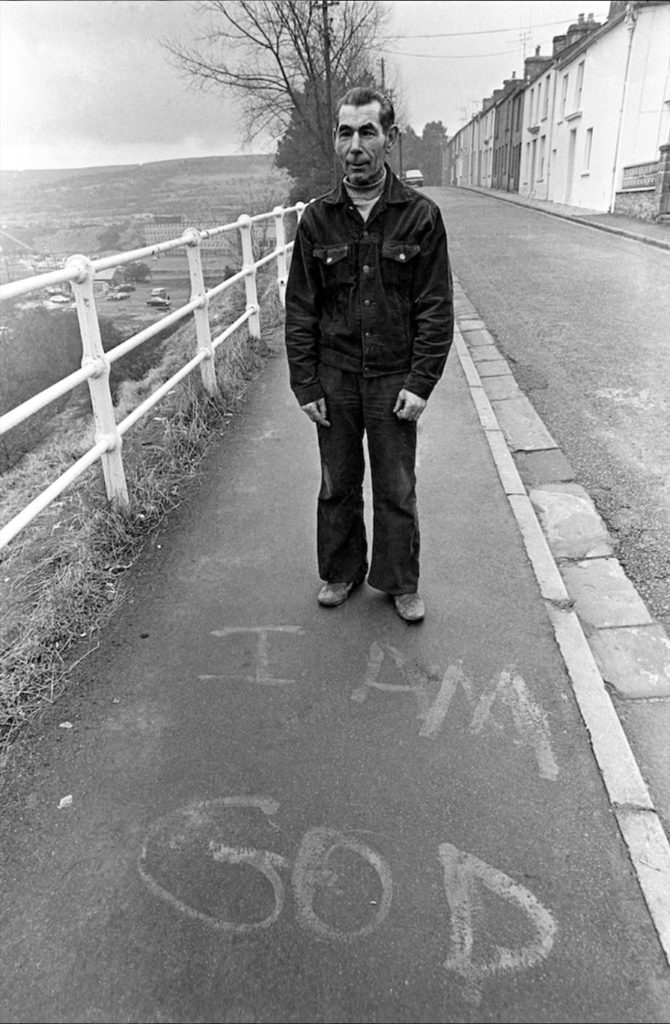
God in denim on the British tip in Merthyr
‘I’m God, take my photograph’, he shouted at me as I was passing. His name was ‘Sheppy’ and he lived on the Brecon Road. He hung out with ‘Malcolm the Mad Axe-man’ who killed himself by jumping off Cefn Viaduct.
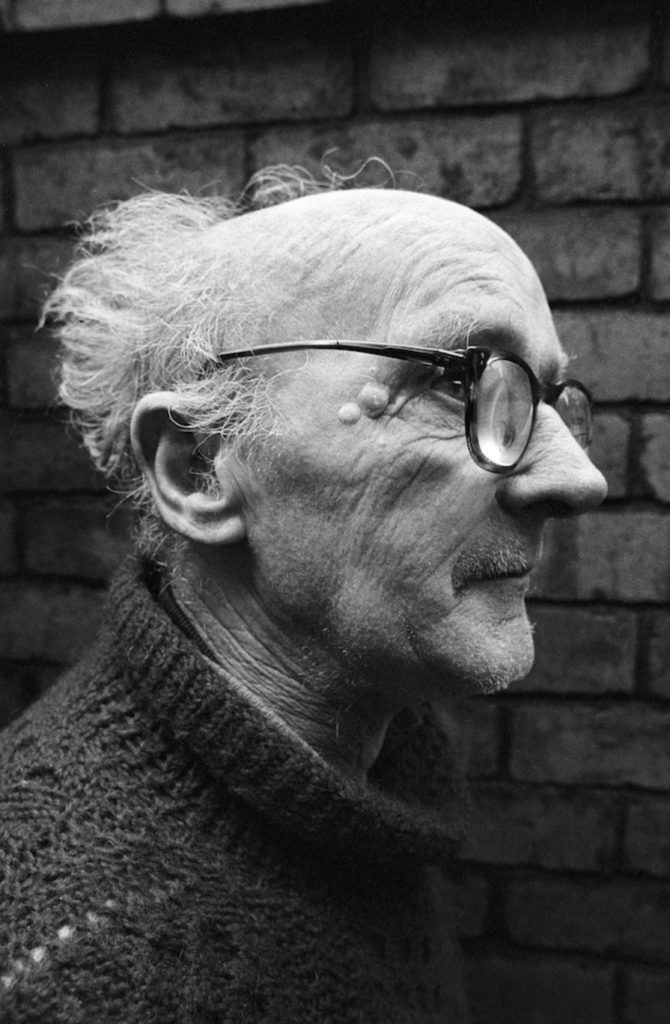
Billy Baldy
He was nearly seventy. He drank rough cider in Ye Olde Express and rolled his own from the nips of used cigarettes which he recycled from the ashtrays and stored in a little tin box – Mintoes he called them. He would quote the Iranian poet Omar Khayyam ‘Let us be happy, time is passing by. There is no return, when you go you are gone’. And he would drink every day until he was legless. He would drink anything and claimed he once drank Brasso. ‘I’ve never fucking worked and I never fucking will’ was his motto.
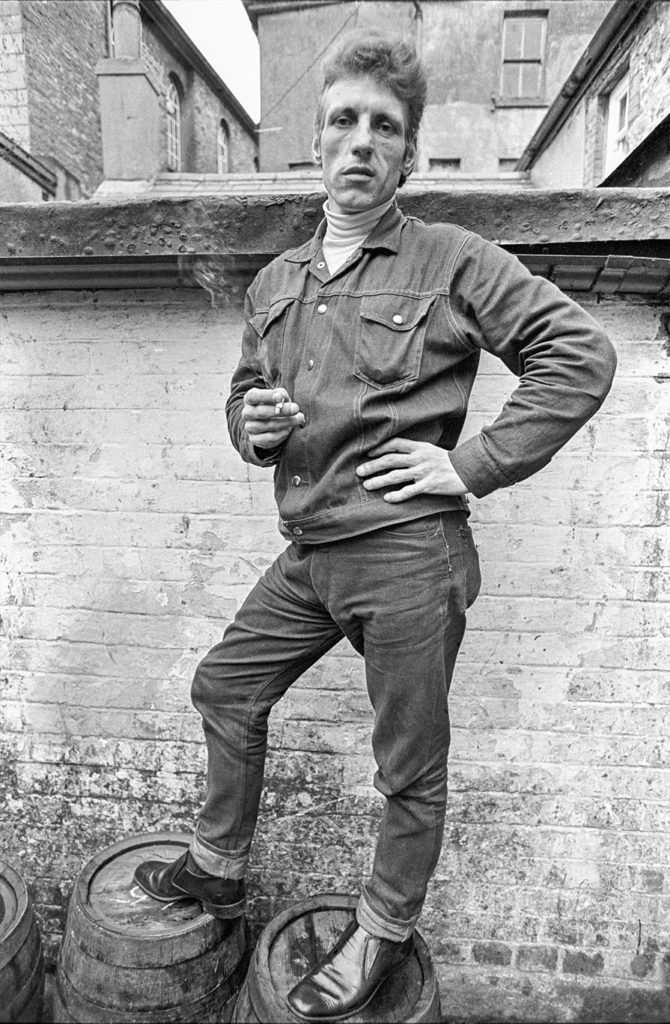
Billy Diana
Billy love to woo the women with his sexy rendition of Paul Anka’s Diana – his signature tune. After a few pints you couldn’t stop him. He would gyrate his hips wildly in an Elvis Presley style.
